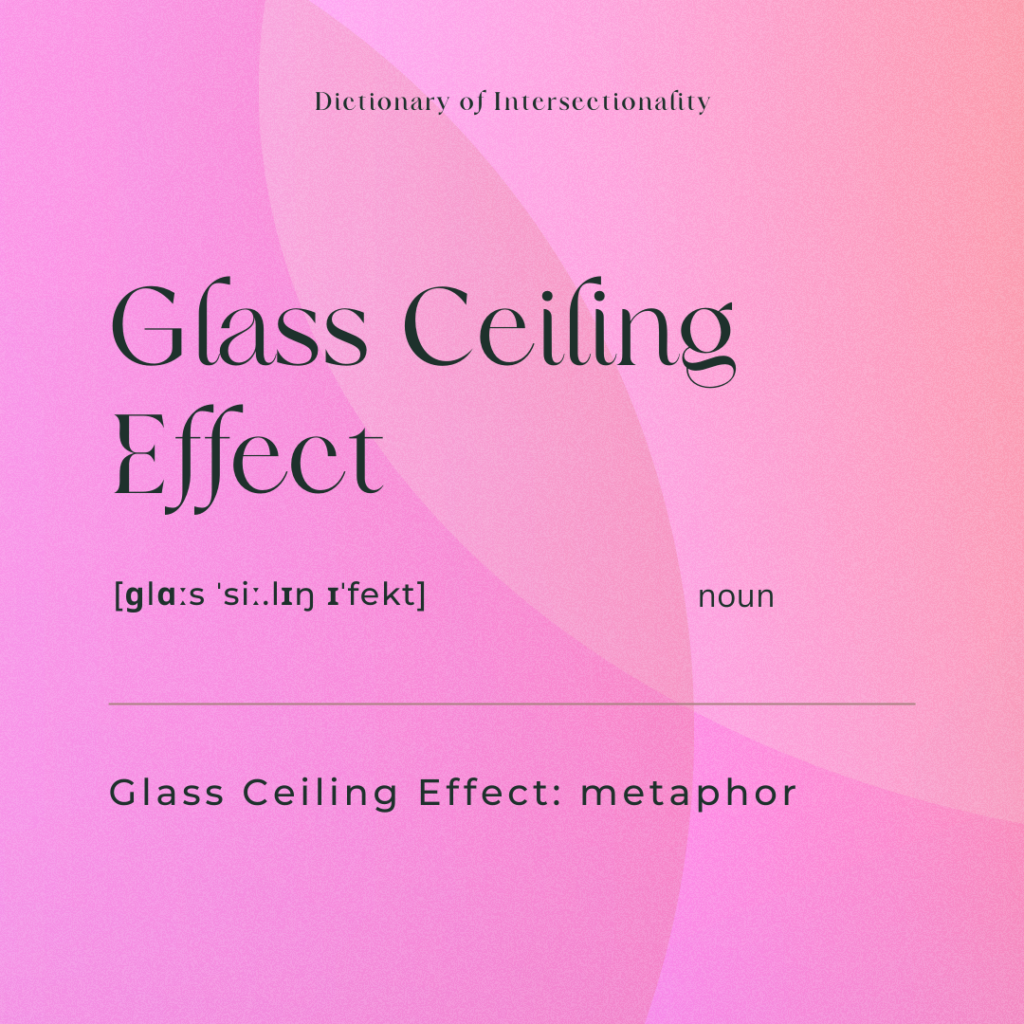
The glass ceiling effect is a metaphor usually used to describe an invisible, often unacknowledged, and discriminatory barrier that impedes women and other minorities from achieving power positions in the workplace.
The glass ceiling effect was coined as a phrase in 1078 by Marilyn Loden, a management consultant. It was actively used in the 1980s when women had difficulties reaching higher positions in companies they worked for. They could not advance past certain positions. When they tried to climb higher on the career ladder, women faced great barriers that were very difficult to get through.
The effect implies that gender or other “disadvantages” are criteria that impede more at the top of the hierarchy than at lower working levels. Later on, these “disadvantages” become worse in the growing process of a person’s career.
“The glass ceiling isn’t so much a thing. It’s a phenomenon that people have noticed, where women seem to have an easier time entering into organizations at lower levels, but as they advance to higher levels, their numbers dwindle,” says Rosalind M. Chow.
This barrier has cultural roots. It is, in fact, the result of unconscious biases that drive the discriminatory response of impeding the advancement in the career. The phenomenon happens worldwide, but with differences among countries.
An example of the glass ceiling effect would be in the context of a corporation. A woman with better skills, talent, and education than her male peers, competing for the same leadership position, is passed over by her male peer for promotion.
In recent times, the glass ceiling effect has been tackled by many companies, showing the world an increased number of women covering leadership roles. However, the phenomenon is still pervasive worldwide.
How to break the glass ceiling?
At the individual level, we can be aware this phenomenon exists, thus getting rid of the idea that working “failures” of the promotion are a reflection of personal values as an employee.
Organizations can also take action by being aware of the glass ceiling effect’s existence in their companies, investing in supporting the employees, and participating in unconscious bias trainings.
Priyanka Chopra has an interesting intake of how to break the glass ceiling effect. You can find it in the resources section along with many others.
See more resources
Cotter, D. A., Hermsen, J. M., Ovadia, S., & Vanneman, R. (2001). The glass ceiling effect. Social forces, 80(2), 655-681.
https://www.mindtools.com/aasylpx/breaking-the-glass-ceiling
https://www.bbc.com/news/world-42026266
